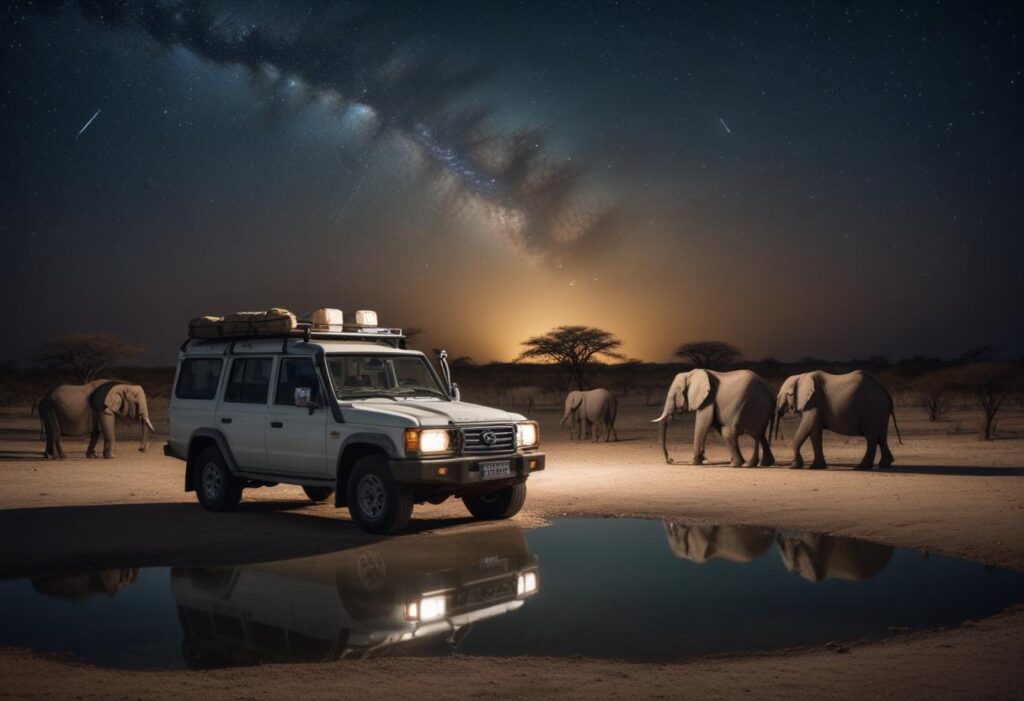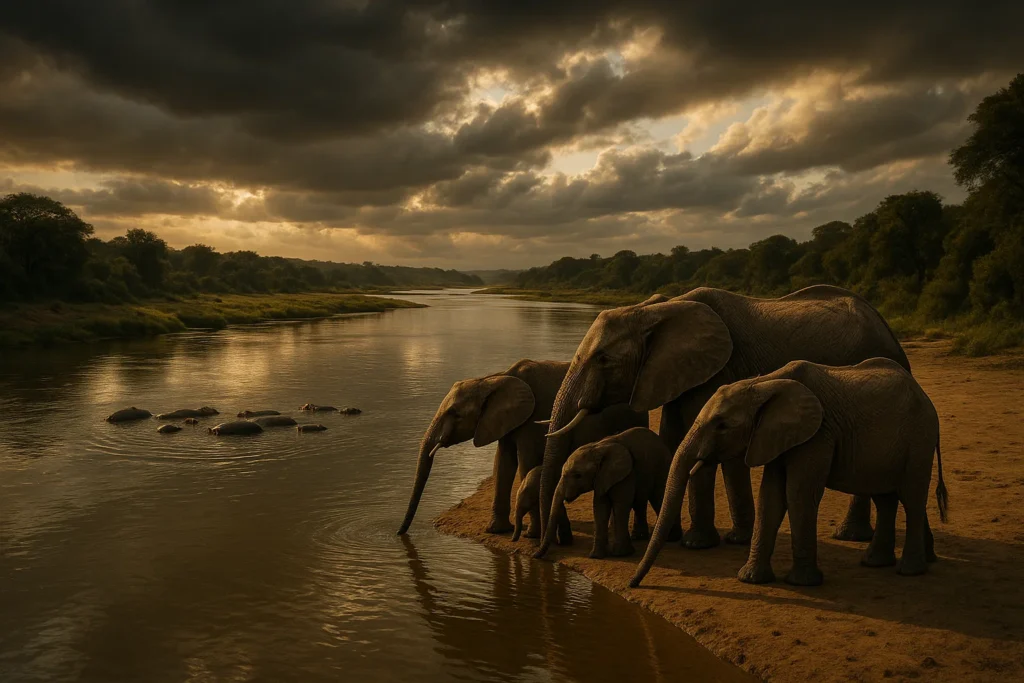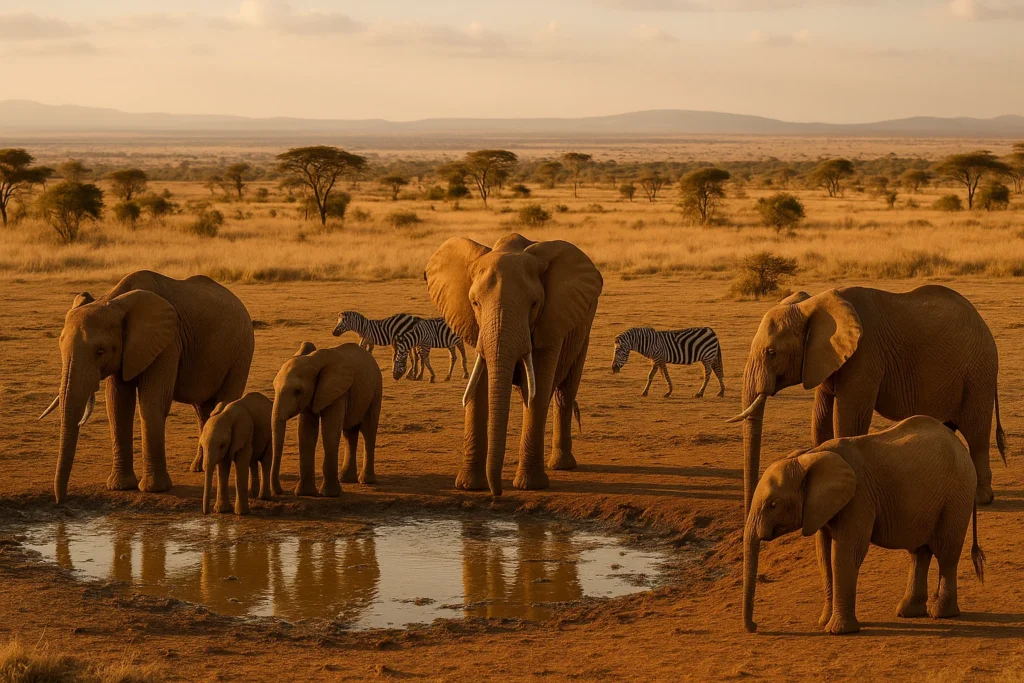Etosha National Park in Namibia is a premier safari destination renowned for its shimmering salt pan, unique landscapes, and extraordinary wildlife sightings. Whether you’re planning a self-drive adventure or joining a guided tour, this guide covers the best camps, driving routes, and what to expect in each zone of this unforgettable park.
Overview: Why Etosha Is Unique
Unlike most African parks dominated by rivers and thick vegetation, Etosha’s centerpiece is a vast salt pan visible from space. The surrounding savannas and waterholes draw incredible numbers of wildlife, especially in the dry season (June to October). This setup makes Etosha one of the best places in Africa for reliable, clear sightings of large mammals.
- Size: 22,270 km²
- Established: 1907
- Best Time to Visit: June to October (dry season)
Map & Zones: Understanding Etosha’s Layout
Etosha is accessible via several gates, with the most popular route stretching from Andersson’s Gate (southwest) to Von Lindequist Gate (east). The park is commonly divided into four main zones:
1. Okaukuejo Area (Southwest)
- Main gate: Andersson’s Gate (near Outjo)
- Famous for: Waterhole at Okaukuejo Camp—fantastic for night sightings of elephants, lions, and even black rhinos.
- Landscape: Open plains, mopane woodland, numerous waterholes
Ideal for first-time visitors, this zone offers easy access, well-marked routes, and abundant wildlife.
2. Halali Region (Central Etosha)
- Halali Camp is smaller and more tranquil than Okaukuejo, with a lovely waterhole (Moringa) lit at night.
- Central location makes it perfect for accessing both eastern and western parts in day trips.
- Terrain here transitions between woodland and the salt pan’s edge—expect leopards and elephants.
3. Namutoni Area (East Etosha)
- Eastern entrance: Von Lindequist Gate (near Tsumeb)
- Main camp: Namutoni, set in a restored German fort
- Known for more lush vegetation and birdlife; also excellent for spotting zebras, giraffes, and elephants.
- Look for Fischer’s Pan—ideal during the wet season for migratory birds and dramatic landscapes.
4. Western Etosha (Galton Gate to Olifantsrus)
- Opened to self-drivers more recently, this area is wilder and less visited.
- Main camp: Olifantsrus, unique for its elevated hide overlooking a waterhole.
- Best for those seeking solitude, rare antelope species (like roan and Hartmann’s mountain zebra), and a more rustic safari feel.
Top Camps to Stay In
Here are the main park-run camps and what makes them unique:
| Camp | Highlights | Accommodation Style |
|---|---|---|
| Okaukuejo | Iconic floodlit waterhole, high wildlife density | Chalets, camping |
| Halali | Quieter atmosphere, central location | Chalets, camping |
| Namutoni | Historic fort setting, eastern access | Chalets, camping |
| Dolomite | Western luxury, stunning views | High-end tents (no camping) |
| Olifantsrus | Elevated hide, budget-friendly | Camping only |
| Onkoshi | Exclusive and remote, pan views | Eco-luxury chalets only |
Wildlife: What You Can See & Where
Etosha is one of the best places in Africa to see black rhino in the wild, along with four of the Big Five (no buffalo). Wildlife tends to congregate around waterholes, especially during the dry months.
Key Species by Area:
- Okaukuejo-Halali: Elephant, lion, zebra, oryx, springbok
- Halali-Namutoni: Leopard, giraffe, kudu, ostrich, warthog
- Western Etosha: Black rhino, eland, Hartmann’s zebra, less tourist traffic
- Fischer’s Pan (wet season): Flamingos, pelicans, herons
Nighttime at the waterholes often reveals rare nocturnal activity—don’t skip it!
Recommended Routes & Drive Tips
Classic 3–4 Day Route
- Day 1: Enter at Andersson’s Gate, overnight at Okaukuejo
- Day 2: Explore Halali region, overnight at Halali or Dolomite
- Day 3: Head to Namutoni, explore eastern zone
- Day 4: Exit via Von Lindequist Gate
Tips for Self-Drive:
- Gates open at sunrise and close at sunset—respect driving times.
- Stick to designated roads and waterholes—off-roading is prohibited.
- Bring your own snacks and water; distances between camps can be long.
- Watch for sudden animal crossings and never exit your vehicle outside camp areas.
Conclusion
Etosha offers an unparalleled safari experience that’s both wild and accessible. From its unique salt pan landscapes to intimate waterhole sightings, every corner of this park has a story to tell. Whether you’re a first-timer or seasoned wildlife enthusiast, Etosha promises an unforgettable journey into Namibia’s natural heart.
Explore more African destinations and safari planning tips on our blog!
Frequently Asked Questions (FAQs)
Yes, during the dry season. All main roads are well-graded gravel.
Yes, through Namibia Wildlife Resorts (NWR). Book early, especially for peak season.
Only guided night drives organized by the camps; self-driving at night is prohibited.
Absolutely—especially in the eastern wetlands during and after the rains.






